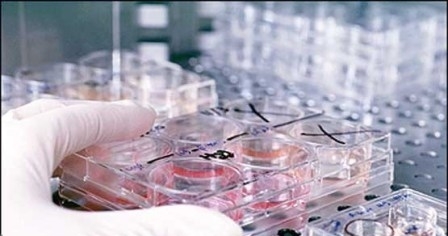 Tehran, March 26, IRNA � Iranian researchers managed to study the gold nanorods to label them with other radionuclides while investigating the distribution of labeled nanoparticles.
Tehran, March 26, IRNA � Iranian researchers managed to study the gold nanorods to label them with other radionuclides while investigating the distribution of labeled nanoparticles.Dr Soudeh Sajjadi, one of the scientists involved in the project, told IRNA that the researchers believe that gold nanoparticles have various applications in molecular imaging and carrying medications due to their unique physicochemical properties such as ease of production and surface modification and biocompatibility.
She noted that among various shapes, gold nanorods have significant optical properties and their known biocompatibility is higher than that of other shapes of gold nanoparticles.
The use of isotopes has recently increased in studying the distribution of nanoparticles inside the body. The reason is the availability of highly sensitive methods to detect radioisotope coated with nanoparticles inside the body, the researcher added.
Therefore, she went on to explain, it is expected that the combination of nanorods with iodine-131 isotope, which is mostly used in imaging and in the treatment of diseases, would result in the creation and development of imaging methods combined with nuclear imaging.
A two-functional group is used in most of nanoparticles labeling methods by using radionuclides to be connected with the nanoparticles, and then a radioactive metal is added to it. However, in this research, the modified nanoparticles were labeled with iodine-131 without using any type of functional group. The reason is high affinity of iodine in connection with the surface of gold nanorods.
According to Sajjadi, the researchers are currently trying to synthesize gold nanoparticles in various shapes and sizes, to label them with other radionuclides, and to investigate the distribution of labeled nanoparticles.
The nanorods are coated with polyethylene glycol (PEG) and are labeled with iodine-131 isotope, and they have applications in medical industries, specially for in vivo imaging and in the treatment of diseases like tumors.
By IRNA
The Iran Project is not responsible for the content of quoted articles.











